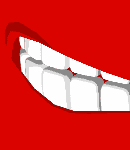Alex
 ZEQ2 Effects Programmer
ZEQ2 Effects Programmer


|
 Tuesday, May 16, 2006 Tuesday, May 16, 2006
Ok, I'm in need of a ramble and I figure there are a few people here who are interested in this.
I'm currently working on a sizable project which esentially boils down to an online room booking and management system for my parents' conference centre, which currently has ten rooms with two hefty folders full of information on the bookings. The staff there have been using this pen and paper based system since the place opened and are very stubborn about change as they aren't the most computer leterate of people, so the design of the web based system would need to be as fluid and dynamic as possible, without the horribly tedious 'wait for the next page to load' work flow. This, ofcourse, pointed me towards all these buzz words which are floating about these days like 'Web 2.0', 'Remote Scripting' and 'AJAX', as well as the old DHTML and JavaScript.
Having originally learnt HTML around the time of HTML4 being standardised and javascript and DHTML being , my memories of DHTML and JavaScript have been that of beautimus soups of html and javascript to send things flying about the screen or a ton of specialised code for rollovers and slight CSS alteration. Until recently that had always made me stear clear of Javascript unless absolutely needed (along with never having a decent reference for it), but now with the need to do more than a plain old web site interface can give me, I decided it was worth my time looking into it.
AJAX, or Asynchronous Javascript And XML, is the buzzword I hear most people are using for this kind of level of interactivity in a web application, though in reality the term only refers to the use of the XMLHttpRequest object in javascript to make a connection to the server to request data. The actual page-updating is done through plain JavaScript and access to the DOM tree. DHTML and JavaScript are old concepts, though with modern, standard compliant coding ideals aren't the beautimus soup monsters they used to be. With the seperation of HTML and CSS being the norm, using HTML as semantic markup and CSS as the design information, JavaScript can indeed be similarly completely split off for the site's 'functionality'.
On my various searches I came across a book called "DHTML Uptopia: Modern Web Design Using JavaScript & DOM" from www.sitepoint.com. It arrived today and I read through the first couple of chapters and I have to say, that book is one of the best I've read on web design. It doesn't waste time detailing things a webdesigner should already know, such as HTML and CSS, it doesn't leave vague areas (unless it's covered in a later chapter) and it doesn't give pointless examples which aren't any use. It explains the methods it uses well, gives precise examples which show exactly what it's doing and certainly gives you all the information you need to make a start on your own stuff straight away. After just reading the first couple of chapters and no prior experience with the techniques used I was able to create a small script in around twenty minutes, which allows menu items to be added and removed by a click of a button and the text altered by clicking on it, typing then clicking off. Really simple to do, but it opens up a lot of possibilities and I'm kicking myself for not looking into it sooner.
If you're a web designer I heavilly suggest that you give this book a look, especially if you want to develop more interactivity into your web applications. I guess this really hasn't gone anywhere, so as a subject of discussion, what are poeple's thoughts about use of these interactive techniques over standard website usage?
|